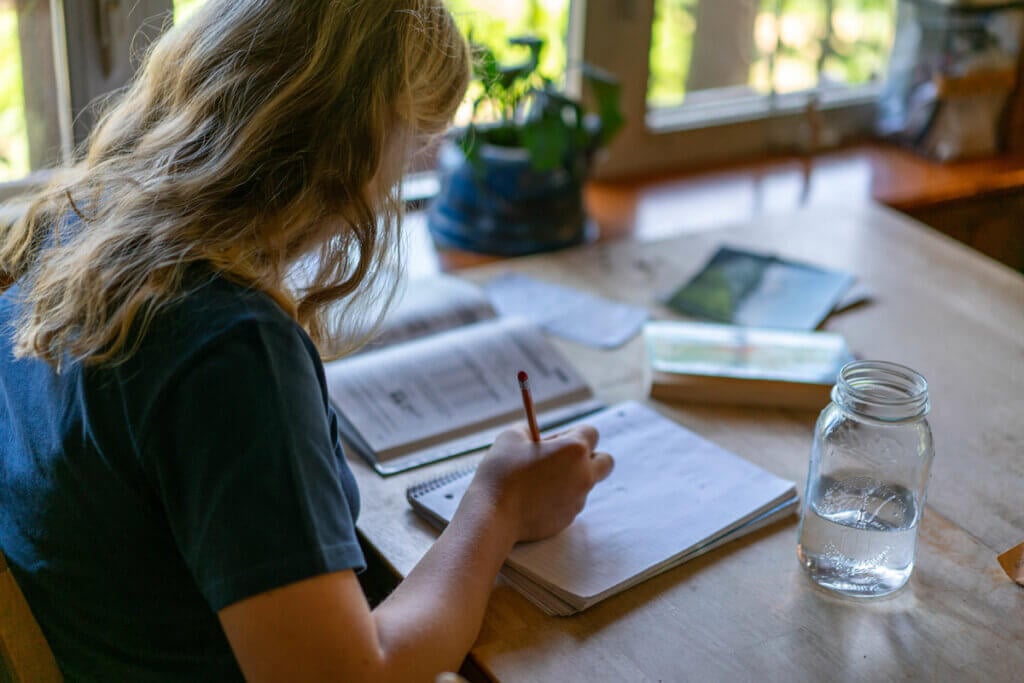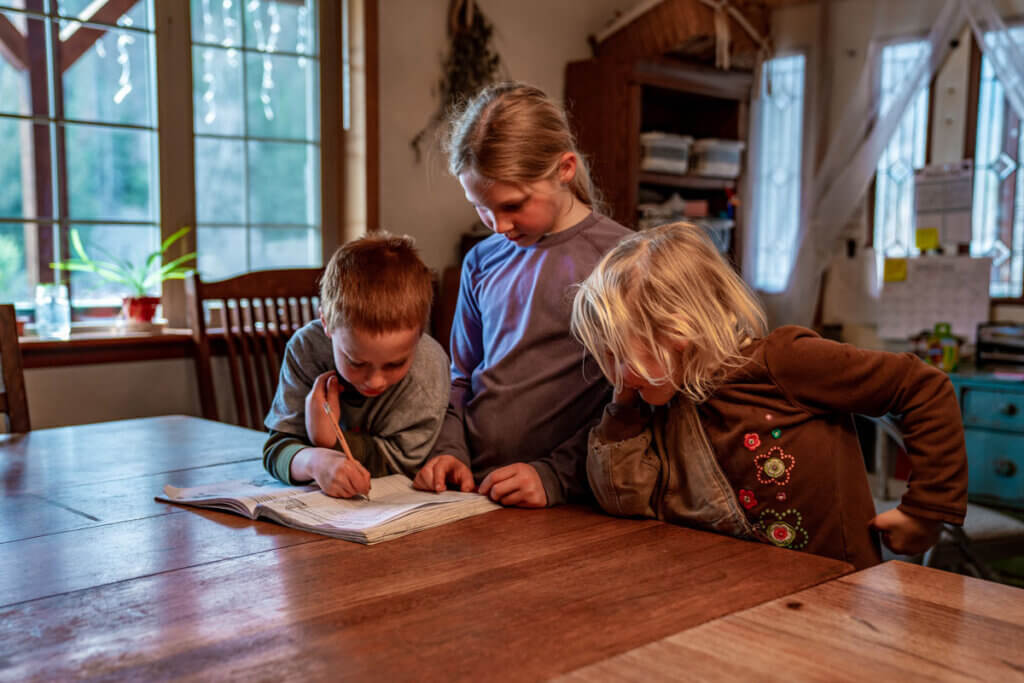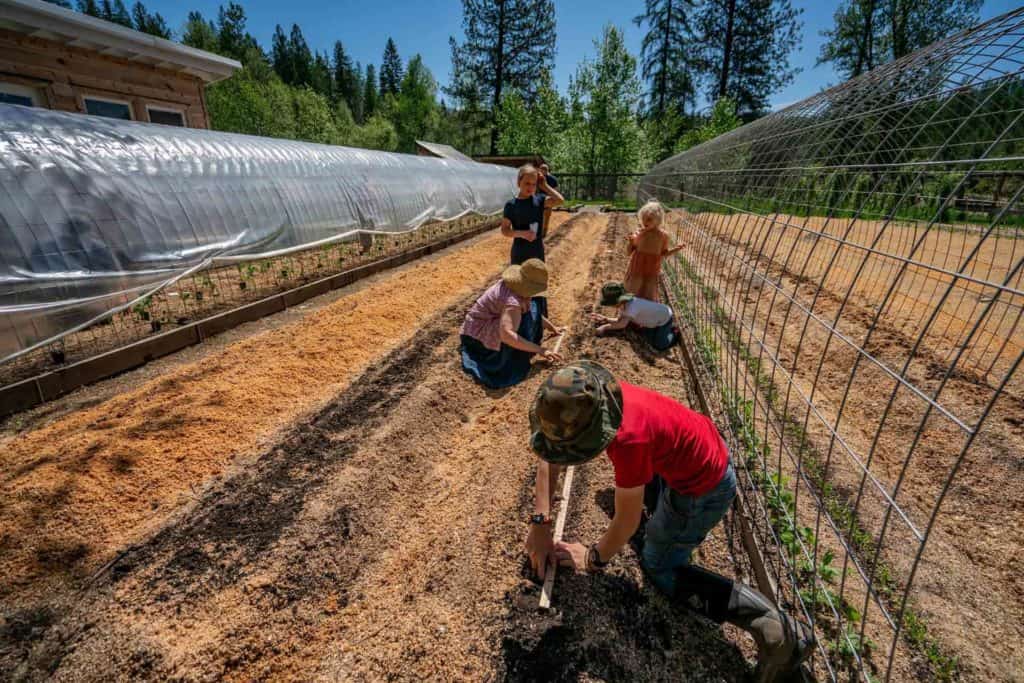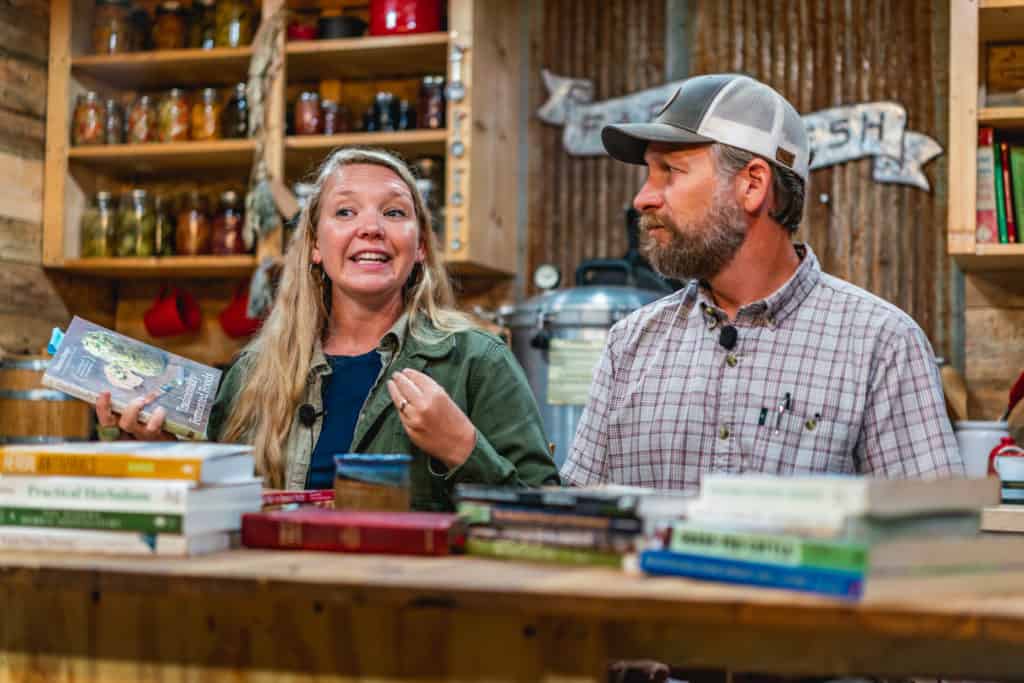Do you want to start homeschooling but feel overwhelmed with all of the information out there? Whether a child is in kindergarten or high school, it’s easy for new homeschooling parents to feel lost. Read these homeschool tips for success that will get you off to a smooth start.

Why We Choose to Homeschool
We choose to live a homesteading lifestyle, and homesteading with children allows us to utilize the homestead experience to educate our children by integrating entrepreneurship, food production, animal husbandry, and increasing self-sufficiency.
This hands-on approach allows our children to have experiences and the flexibility to participate in other activities that aren’t taught in public schools, while providing them with individualized attention, correction and guidance as needed.
We do not consider ourselves parenting “experts,” although we have raised (and are continuing to raise) quite a few children. But we strive to keep in mind that our parenting styles should change with each child but our parenting principles remain the same no matter what.
The list of what a child learns goes far beyond the classroom with textbooks. We teach from those, too, but add so much more through daily life experiences on the homestead. Even teaching children the importance of chore time is educational.
Above all, we value shaping our children’s character by teaching good moral and ethical behaviors. Choosing to homeschool maximizes our time and exposure to accomplish that goal.

What About Socialization
I was a teacher in the public school system before we had children. I can share that there were just as many unsocialized children in that setting as I have ever met in the homeschooling circles we have participated in.
We shouldn’t expect socialization to be taught or experienced in the public or private school system; we should teach it at home. Understanding that socialization is a life skill we teach to our children has led our children to be very equipped in this area.
Due to our homesteading lifestyle, our children have learned to engage in meaningful conversations and social settings with people of every age.

Homeschool Tips for Beginners
When beginning, it can feel overwhelming to sort through all the information floating around on the internet and Facebook groups. We have broken down what we think are the most important homeschool tips you should prioritize when starting out:
- Know your state laws.
- Create your own approach.
- Know the types of homeschooling.
- Choose curricula.
- Know about “hidden curricula.”
- Help your children fall in love with learning.
Know Your State Laws
Each state has different laws and requirements regarding education. I recommend that you search out your specific state law requirements concerning homeschooling. It will be up to you to learn the laws and be informed of any changes.
The Homeschool Legal Defense Association (hslda.org) keeps up-to-date information on homeschooling laws for every state and offers several other free resources to homeschool families as well.

Create Your Own Approach
Weaving our homesteading lifestyle into the education of our children creates a year-round learning experience for them. Our school year does not begin when public and private schools start theirs.
The late summer and early fall is a busy time preparing our homestead for winter by harvesting our garden, preparing the soil for the winter, and getting ready for preservation season. This creates the opportunity for our children to have hands-on experience with science, math, physical education, social studies, and team building.
North Idaho winters are long, and life on our homestead slows down a bit; this is when we concentrate more time on reading, writing, mathematics, sciences, social studies, geography, and more. The textbook side of education, so to speak.
There are still chore jurisdictions and life experiences to weave into kids’ daily routines, but it’s more traditional textbook instruction using the curriculum we choose to educate our children.

Types of Homeschooling
The traditional classroom setting and public or private school teaching methods may not work for you. It can be reading on a living room rug, learning fractions in the kitchen while measuring a recipe, or driving in the car and discussing world events on your way to town.
As a homeschooling mom or dad, you have the flexibility to choose the way that works best for your family.
We do traditional learning with textbooks and programs using a planned schedule. We interject experiential learning experiences on the homestead, too. Just about all facets of life are an opportunity to enrich our love of learning and pass that excitement on to our children.
Remember you are educating your children your way, in your home. It does not need to be a replica of a traditional school (public or private) setting. Designate an area where all textbooks, paper, and teaching tools are organized to create a learning environment, available as needed.

Choosing Curricula
I have researched and used a fair amount of curricula over the years. We have eleven children, which means providing multiple opportunities for different learning styles and seeking a curriculum to meet each specific need.
Likewise, you should do your research. Don’t be shy to connect with other homeschoolers and ask about their experiences with different curricula.
Remember that you are not obligated to use the same curricula for all subjects. You get to pick and choose what works for you and your child’s learning style and interests. For example, we use a particular curriculum for language arts and a different one for math.
We are firm believers in reading as the first foundation of learning. Once your child can read, it will entice them to explore and learn other subjects. The program we have used and will continue to use is Teach Your Child To Read in 100 Easy Lessons.
We have found that the Amish and Mennonite curriculum meets our family’s needs up to eighth grade. The information taught is relatable to living on a homestead. These communities pack their material with a solid foundational education we want our children to learn from.
Also, The Homestead Education by Kody Hanner is a great option for learning homesteading skills while also learning about science.
Once our children reached high school, we met their secondary education requirements through other curricula for different subjects. You can specialize in this area for each child’s interests and needs.

What is Hidden Curricula
Simply put, hidden curricula are other activities you arrange for your children that become educational learning experiences. Field trips to places your child is interested in and can experience firsthand will spark that love for learning and inspire them to try new things.
One of our daughters researched goats for a year. She learned how to raise goats and what to do with the milk. She makes herbed Chevre cheese for the family using fresh herbs from our cottage garden. The beauty of homeschooling couldn’t be more poignant than that!

Help Your Children to Love Learning
Some homeschool parents feel intimidated by the prospect of teaching their children and think we need to do it like the public school does and have a certificate of education saying we are teachers.
Always remember, you know your child and their needs better than anyone.
Teach what you know and know what you teach. There is so much more than reading, writing and arithmetic! Research together, love learning through experience and find what works for you and your children individually.
Many programs are out there to help you educate your children from home. The best thing you can teach your children is to have a love for learning; nothing can replace that life lesson.
Homeschooling has exploded since 2020, and many families decided to stay with the homeschool model versus having their children return to the traditional public school classroom.
Homeschooling groups filled with homeschooling families have sprung up everywhere, bringing community and learning together. Seek out a group in your area; it could be informative, fun, supportive and engaging for your entire family.
Resources
- The Homeschool Legal Defense Association
- Teach Your Child To Read in 100 Easy Lessons
- Amish and Mennonite curriculum
- The Homestead Education

Other Articles You May Enjoy
- Tips for Homesteading With Children
- Homemade Edible Playdough Recipe | Fun & Safe
- DIY Bubble Solution: Easy Homemade Fun for All Ages
- Educating Children Through Homesteading
- The Importance of Chore-Time for Kids
- The Family Economy
- How I Manage Our Home (Household Management Series)
- Teaching Our Children To Have a Productive Morning


















